 On Thursday, April 28, 2011, Mystery Writers of America presented its Grand Master Award to Sisters in Crime founding sister Sara Paretsky at the annual Edgar Awards banquet in New York City. Below are remarks from the ceremony reprinted here with permission of SinC Mystery. For more about the 2011 Grand Master and her trailblazing female detective V. I. Warshawski, also see the Mystery Scene feature "Playing Hardball" now online.
On Thursday, April 28, 2011, Mystery Writers of America presented its Grand Master Award to Sisters in Crime founding sister Sara Paretsky at the annual Edgar Awards banquet in New York City. Below are remarks from the ceremony reprinted here with permission of SinC Mystery. For more about the 2011 Grand Master and her trailblazing female detective V. I. Warshawski, also see the Mystery Scene feature "Playing Hardball" now online.
Pictured Sara Paretsky (L) and Cathy Pickens (R) at the 2011 MWA Edgar Awards Banquet. (Photo: Matt Peyton Photography.)
THE INTRODUCTION
SinC President and MWA board member Cathy Pickens introduced Paretsky at the ceremony with the following remarks:
In 1980, with the visionary thinking we know to expect in publishing, thirteen publishers rejected Indemnity Only. The first V. I. Warshawski novel "does not meet our needs at this time," they said. Visionary indeed.
Fortunately, V. I. hit the streets of Chicago and bookshelves in 1982, breaking the barriers that said women in mysteries could be only victims or vamps.
That would've been enough, creating a body of work that does what the best of fiction should do in keeping the genre alive and relevant.
But social justice can't always be sought only on the pages of a novel. In the mid-1980s, Sara Paretsky saw that, while women wrote one-third of the mystery novels published, they were receiving less than 10% of the review space. So she gathered a group of like-minded women mystery writers and began monitoring reviews and educating reviewers.
Today, women write roughly half of the mysteries published. The gap in review coverage still exists, but it is much smaller than it was. And it is significantly smaller for mysteries than the recently publicized and debated gap that exists in the reviews of literary fiction.
And that would've been enough. But Sara and this band of Sisters in Crime didn't think it was enough. They set about educating writers about what it means to be a professional in this business, and they encouraged and mentored and shared their wisdom.
I remember poring over my copy of Shameless Promotion for Brazen Hussies (you've got to buy a book with a title like that! It's now available in its third edition). And I've learned much from countless Sisters who have become my mentors and friends.
Sisters in Crime has grown to 3,000 members, an inclusive group of writers and readers, booksellers and librarians, women and men, who continue to encourage the professional development of writers.
So, as a reader, I thank you for V. I. Warshawski, who has shown us how tough women can be and how we all should be, fighting for things that matter.
As a writer, I thank you for the mentoring, education and support.
And, as the 24th president of Sisters in Crime and on behalf of MWA, it is with delight that I present to Sara Paretsky this much-deserved Grand Master Award.
THE ACCEPTANCE
The following are Sara Paretsky's acceptance remarks for the Grand Master Award at the 2011 Edgar Allan Poe Dinner:
I went to my first Edgar dinner in 1982. I watched the icons of my reading life talking and joking, but I was painfully shy and didn’t try to introduce myself to anyone. I was seated at a table at the outermost reach of the Sheraton ballroom, and the high point of the meal was when a waiter slugged one of my tablemates for not relinquishing his salad plate on schedule.
I’m amazed, and grateful, to join the company of Grand Masters whose work I have long admired, but it is unsettling to realize how quickly twenty-nine years have passed.
Many people helped me reach this point. Stuart Kaminsky, whom we mourn, mentored me as I wrote my first book. My agent, Dominick Abel, agreed to represent me all those years ago; he has never faltered in his support.
Thanks to my editor, Chris Pepe, and my publishers, Putnam, for their hard work, and their presence at the banquet. (Although the company is known as GP Putnam’s Sons, it was George Putnam’s daughter, Mary, who was a leading 19th century writer and feminist. It seems fitting that my novels bear the name of the woman who forced England to accept women as doctors.) I have been fortunate in the friendship of Dorothy Salisbury Davis. Her advice as a writer, and her guidance in the business of living, have been my lodestar for many years.
Above all, I thank my husband, the distinguished physicist Courtenay Wright, who has listened to twenty-nine years of fears and self-doubts; his steadfast support has kept the wind beneath my sails. To him and to Dorothy, this award and these remarks are equally dedicated.
The world of books has seen major changes since my first Edgar dinner. It had been hard for me to find a publisher for a woman PI in America’s heartland; now, as a result of the revolution I helped start, detectives of all stripes and locations are commonplace.
I was lucky: in 1982, there were many more publishers to approach than exist today.
We live in a world of conglomerated publishers and distributors; we writers are often told that we are not creating stories or characters, but brands, as if the chief difference between our stories and toilet paper is that you can’t upload Charmin to your iPad. At least, not yet. In such a world it is hard to remember that we are storytellers, not accountants, marketers or vending machines.
This is not a new problem. When Melville published Moby Dick in 1851, the reception by both public and critics was hostile: he had left his brand, his travelogue novels. During Melville’s life, this astonishing masterpiece sold 500 copies. In a bitter weariness, Melville wrote Hawthorne: The silent grass-growing mood in which a [person] ought to compose—that can seldom be mine. Dollars damn me.
Melville lived through times as turbulent as ours—slavery, the Civil War, the changes wrought by industrialization. But ours is also a time that thrives on slick one-liners, and on lies, made easier to swallow because we devalue literacy.
Today, close to one in four American adults can’t read or write well enough to handle a job application, let alone read a novel.
It took a 12th-grade vocabulary for Melville to follow the Lincoln-Douglas debates, but our most recent presidential debates use the language of sixth graders. Some candidates have devolved to the pre-school level.
We writers owe a duty to our gifts. We’ve been given the gift of language, and we need to dig deep into words. We need to relish wordplay, not rely on clichés as we stumble toward the marketplace, or settle for the slick, repackaged street-talk we pick up from rap and TV.
And we owe a duty to our other gift, our stories. In the cacophony of sound that fills our broadband waves, amid the lies and shrill self-promotions, it is essential that we writers return to Melville’s silent grass-growing place and find the truths that fiction can lay bare.
Our fictions are myths, of course, not histories: they show heroes vanquishing monsters. Theseus versus the wicked Minotaur, Marlowe versus the wicked temptress, V. I. Warshawski versus the wicked corporation, they’re all the same story.
But these fictions tell essential truths, about our emotional lives, what we fear, what we want, what we need. Writing is a form of auto-surgery: the closer we cut to our own bones, force ourselves to emotional truth, the more authentic will our voices become.
As the poet Sappho wrote, more than 2600 years ago,
Although they are only breath
Words, which I command
Are immortal.
What we remember from Sappho’s time, and from Melville’s, are not brand names or spreadsheets, but poets. For in the end, it is that word which is only breath which endures.
Sara Paretsky, the 2011 MWA Grand Master, is the award-winning author of the 14-book mystery series featuring female detective V.I. Warshawski. The newest title in the series is Body Work. Sara is the founding sister of Sisters in Crime.
Cathy Pickens, the national president of Sisters in Crime, is the author of the award-winning Southern Fried mystery series featuring South Carolina attorney Avery Andrews. The most recent title in the series is Can’t Never Tell.
These remarks were originally published April 30, 2011 online at the Sisters in Crime blog SinC Mystery.
For more on Sara Paretsky and V. I. Warshawski see the Mystery Scene feature "Playing Hardball."
{youtube width="400"}oEmelXjlcWQ{/youtube}

 On Thursday, April 28, 2011,
On Thursday, April 28, 2011, 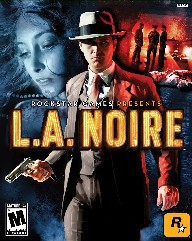 That's just as well because I'm really bad at video games as I discovered during the few games of Wii with my godchildren. Oh yes, I've have lost big time to a 12-year-old, an 8-year-old and the 6-year-old. So instead of video games, I spend more time than I should on Facebook.
That's just as well because I'm really bad at video games as I discovered during the few games of Wii with my godchildren. Oh yes, I've have lost big time to a 12-year-old, an 8-year-old and the 6-year-old. So instead of video games, I spend more time than I should on Facebook.  The game's main character is Cole Phelps, a L.A. police detective who was a decorated Marine during World War II. (At left is a scene from the game.)
The game's main character is Cole Phelps, a L.A. police detective who was a decorated Marine during World War II. (At left is a scene from the game.)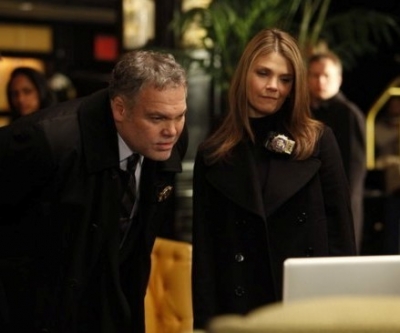
 If you have the newest issue of
If you have the newest issue of  But this was the first time I glimpsed some of the side streets with all its colorful aspects. The click of mah jong tiles from behind the screen doors in the basements. The laundry that hangs from some of the balconies. The cooking smells that come from bakeries, restaurants and apartments. All that shows up in
But this was the first time I glimpsed some of the side streets with all its colorful aspects. The click of mah jong tiles from behind the screen doors in the basements. The laundry that hangs from some of the balconies. The cooking smells that come from bakeries, restaurants and apartments. All that shows up in  I think that many of us play the casting game when we read a series—wondering which actors we'd like to see play our favorite characters.
I think that many of us play the casting game when we read a series—wondering which actors we'd like to see play our favorite characters. Of course, expect a few changes from the novels but the few liberties make sense for the TV audience. Walt will be a bit younger in the A&E series than he is in the novels. A few names will be changed and look for Cady to move back to Wyoming so there will be more interaction with father and daughter.
Of course, expect a few changes from the novels but the few liberties make sense for the TV audience. Walt will be a bit younger in the A&E series than he is in the novels. A few names will be changed and look for Cady to move back to Wyoming so there will be more interaction with father and daughter. 
 "They do, and it's coming through in the production in spades. The direction and performances are amazing.The man who plays Walt Longmire, Robert Taylor, IS Walt. Lou Diamond Phillips is stupendous as Henry Standing Bear—even went to the Northern Cheyenne Reservation to get a feel for the land and the people, and Katee Sackhoff? Well, she was born Vic."But for Johnson, the novels continue.
"They do, and it's coming through in the production in spades. The direction and performances are amazing.The man who plays Walt Longmire, Robert Taylor, IS Walt. Lou Diamond Phillips is stupendous as Henry Standing Bear—even went to the Northern Cheyenne Reservation to get a feel for the land and the people, and Katee Sackhoff? Well, she was born Vic."But for Johnson, the novels continue.  The CrimeFest Awards were handed out at the CrimeFest Gala Dinner May 21, 2011, at the Marriott Royal Hotel in Bristol, United Kingdom. This year's awards were for crime publications published in the UK in 2010. The annual convention draws top crime novelists, readers, editors, publishers and reviewers from around the world and gives delegates the opportunity to celebrate the genre in an informal atmosphere.
The CrimeFest Awards were handed out at the CrimeFest Gala Dinner May 21, 2011, at the Marriott Royal Hotel in Bristol, United Kingdom. This year's awards were for crime publications published in the UK in 2010. The annual convention draws top crime novelists, readers, editors, publishers and reviewers from around the world and gives delegates the opportunity to celebrate the genre in an informal atmosphere. Last Laugh Award (best humorous crime novel first)
Last Laugh Award (best humorous crime novel first)
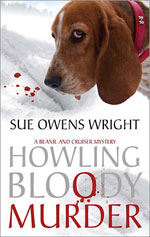
 Bassets from all over the United States and Canada assembled to waddle en masse, along with their owners, down Main Street, USA. The Waddle King and Queen, crowned the night before in a canine coronation, loafed regally in royal raiment atop their float, ready to lead hordes of hounds through the town. At long last, we heard the signal for the parade to commence, “Let’s Waddle!” And we did.
Bassets from all over the United States and Canada assembled to waddle en masse, along with their owners, down Main Street, USA. The Waddle King and Queen, crowned the night before in a canine coronation, loafed regally in royal raiment atop their float, ready to lead hordes of hounds through the town. At long last, we heard the signal for the parade to commence, “Let’s Waddle!” And we did.
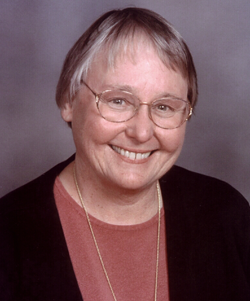
 I look back over a lifetime of reading and remember books from many wonderful writers. I learned from them all, suspense from Alexandre Dumas, courage from Louisa May Alcott, protest from Charles Dickens, the imaginable unimaginable from William Faulkner, anguish from Edna St. Vincent Millay, clear-eyed judgment from Agatha Christie.
I look back over a lifetime of reading and remember books from many wonderful writers. I learned from them all, suspense from Alexandre Dumas, courage from Louisa May Alcott, protest from Charles Dickens, the imaginable unimaginable from William Faulkner, anguish from Edna St. Vincent Millay, clear-eyed judgment from Agatha Christie.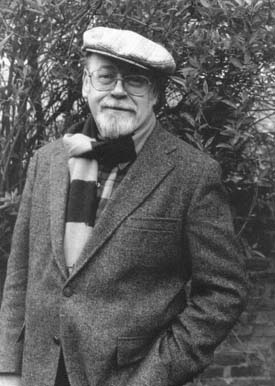
 Hansen: In the 1970s, a publisher asked me for a series with a macho central character, and I chose a traditionally masculine job for the man, where he would also meet a variety of people day to day. The publisher did not go ahead with that line of mysteries, but I put Bohannon in a drawer until 1982, when Eleanor Sullivan of Ellery Queen Magazine began asking me for stories.
Hansen: In the 1970s, a publisher asked me for a series with a macho central character, and I chose a traditionally masculine job for the man, where he would also meet a variety of people day to day. The publisher did not go ahead with that line of mysteries, but I put Bohannon in a drawer until 1982, when Eleanor Sullivan of Ellery Queen Magazine began asking me for stories. Hansen: Living Upstairs sold out three printings in hardcover and three more in paperback. But I had to publish the third in the series, The Cutbank Path, on my own, through the online print-on-demand service Xlibris. I offer this as my comment on what’s happened to book publishing in the last five years.
Hansen: Living Upstairs sold out three printings in hardcover and three more in paperback. But I had to publish the third in the series, The Cutbank Path, on my own, through the online print-on-demand service Xlibris. I offer this as my comment on what’s happened to book publishing in the last five years.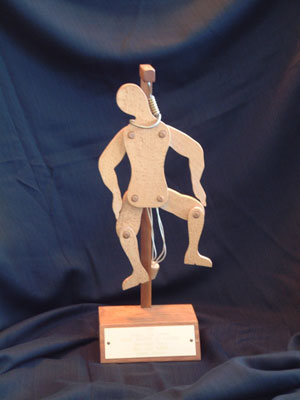 The Crime Writers of Canada (CWC) announced the winners for the 28th annual Arthur Ellis Awards on June 2, in Victoria, British Columbia. The Arthur Ellis is Canada’s premier award for excellence in crime writing. The 2011 awards are for books and short stories published in 2010. Crime Writers celebrate all facets of the genre, including crime, detective, espionage, mystery, suspense, or thriller, and include fictional or factual accounts of criminal doings and literary works with a criminal theme.
The Crime Writers of Canada (CWC) announced the winners for the 28th annual Arthur Ellis Awards on June 2, in Victoria, British Columbia. The Arthur Ellis is Canada’s premier award for excellence in crime writing. The 2011 awards are for books and short stories published in 2010. Crime Writers celebrate all facets of the genre, including crime, detective, espionage, mystery, suspense, or thriller, and include fictional or factual accounts of criminal doings and literary works with a criminal theme.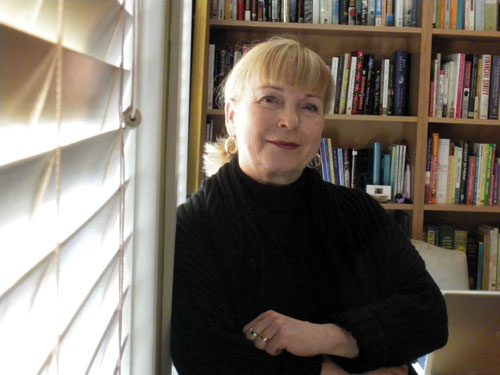 Cozy mysteries—with their puzzle plots, engaging characters, and reassuringly familiar settings—often don’t get the respect they deserve. Over the past two decades, conflicted private eyes, crazed serial killers, and cynical cops may have appeared to dominate bookstores, but cozies quietly sell, year in and year out, to a huge audience.
Cozy mysteries—with their puzzle plots, engaging characters, and reassuringly familiar settings—often don’t get the respect they deserve. Over the past two decades, conflicted private eyes, crazed serial killers, and cynical cops may have appeared to dominate bookstores, but cozies quietly sell, year in and year out, to a huge audience.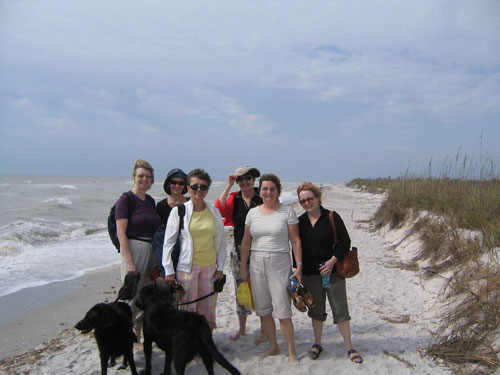 Maffini wrote her first Fiona Silk mystery,
Maffini wrote her first Fiona Silk mystery, 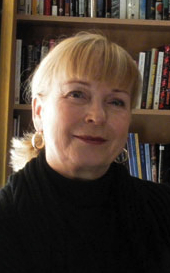 Puzzle plots, lady sleuths, and good humor—the 2011 Arthur Ellis winner discusses her three series.
Puzzle plots, lady sleuths, and good humor—the 2011 Arthur Ellis winner discusses her three series. A lifelong love of spiders... and literature
A lifelong love of spiders... and literature


 By her own admission a desperately slow writer, she eventually left Lloyd’s to concentrate on her writing whilst struggling to finish Sirens. When she and I first met, she had produced just three novels, plus an excellent tale which demonstrated a mastery of the short form, “An Acquaintance With Mr Collins.” She was at that time working on her fourth novel, but also tinkering with other projects. Perhaps the digressions gave her an excuse for not making swifter progress with the Tamar series; they included a collaboration with four other mystery writers on the theme of the perfect murder and a historical play based on the case of Daniel M’Naghten, who gave his name to the infamous M’Naghten Rules, which have long complicated murder cases where the sanity of the accused is in dispute.
By her own admission a desperately slow writer, she eventually left Lloyd’s to concentrate on her writing whilst struggling to finish Sirens. When she and I first met, she had produced just three novels, plus an excellent tale which demonstrated a mastery of the short form, “An Acquaintance With Mr Collins.” She was at that time working on her fourth novel, but also tinkering with other projects. Perhaps the digressions gave her an excuse for not making swifter progress with the Tamar series; they included a collaboration with four other mystery writers on the theme of the perfect murder and a historical play based on the case of Daniel M’Naghten, who gave his name to the infamous M’Naghten Rules, which have long complicated murder cases where the sanity of the accused is in dispute.
 I remember a time when TV was at its slowest during the summer. Those days are gone.
I remember a time when TV was at its slowest during the summer. Those days are gone.
 Here's what the mystery fan can look forward to on TV this month.
Here's what the mystery fan can look forward to on TV this month. There are always two sides to each story.
There are always two sides to each story.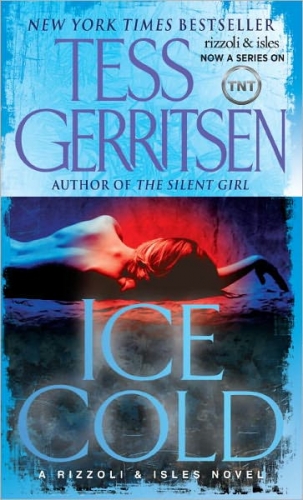 I know that the mystery genre seems to have an abundance of awards, but I, for one, enjoy hearing about them.
I know that the mystery genre seems to have an abundance of awards, but I, for one, enjoy hearing about them. Past winners have included Tess Gerritsen, Lee Child, and Martha Grimes.
Past winners have included Tess Gerritsen, Lee Child, and Martha Grimes.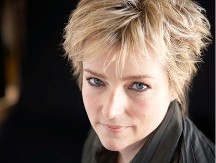 Karin Slaughter's dark vision has made her an international bestselling author.
Karin Slaughter's dark vision has made her an international bestselling author.  Karin begins her tour this week for her latest novel,
Karin begins her tour this week for her latest novel,  The Duffers are simply for fun and, apparently, will become an annual event. I sure hope so.
The Duffers are simply for fun and, apparently, will become an annual event. I sure hope so. When disasters and tragedies occur, the natural tendency is to try to help. Donate to the Red Cross or bring canned goods to the local food bank.
When disasters and tragedies occur, the natural tendency is to try to help. Donate to the Red Cross or bring canned goods to the local food bank.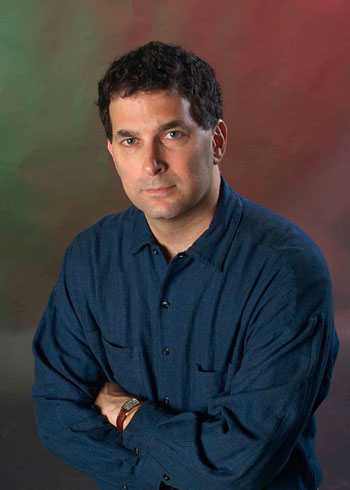 When I was growing up, my father carried a slip of paper in his wallet marked with the number of whatever Hardy Boys mystery I was reading at the time. Four was The Missing Chums. Fifteen was The Sinister Signpost. Twenty-seven was The Secret of Skull Mountain. Whenever my father took a business trip, he always came back with the next book in the series.
When I was growing up, my father carried a slip of paper in his wallet marked with the number of whatever Hardy Boys mystery I was reading at the time. Four was The Missing Chums. Fifteen was The Sinister Signpost. Twenty-seven was The Secret of Skull Mountain. Whenever my father took a business trip, he always came back with the next book in the series. I left Frank and Joe in Bayport and headed off to see the world. The village of St. Mary Mead. The brownstone on West 35th Street. The apartment at 132 Boulevard Richard-Lenoir. At some point I climbed the 17 steps to Baker Street and never quite came back down. (And I couldn’t help but notice that Dr. Watson, like the Hardy boys, was no slouch with the exclamation points—“My dear Holmes!" I ejaculated. “Oh, there could be no question as to the superimposing of the footmarks!”)
I left Frank and Joe in Bayport and headed off to see the world. The village of St. Mary Mead. The brownstone on West 35th Street. The apartment at 132 Boulevard Richard-Lenoir. At some point I climbed the 17 steps to Baker Street and never quite came back down. (And I couldn’t help but notice that Dr. Watson, like the Hardy boys, was no slouch with the exclamation points—“My dear Holmes!" I ejaculated. “Oh, there could be no question as to the superimposing of the footmarks!”) Since then, my father and I have traded dozens, perhaps hundreds of books back and forth. Ed McBain. Ross Thomas. Donald Westlake. Lawrence Block in all his infinite variety. And, of course, the new Lew Fonesca books from Professor Kaminsky. Then there are the new kids, the ones I take pride in recommending—with my now-legendary air of nonchalance—by their first names: By the way, Dad, I see that Harlan has a new standalone out next month. Have you finished Jan’s book yet?
Since then, my father and I have traded dozens, perhaps hundreds of books back and forth. Ed McBain. Ross Thomas. Donald Westlake. Lawrence Block in all his infinite variety. And, of course, the new Lew Fonesca books from Professor Kaminsky. Then there are the new kids, the ones I take pride in recommending—with my now-legendary air of nonchalance—by their first names: By the way, Dad, I see that Harlan has a new standalone out next month. Have you finished Jan’s book yet?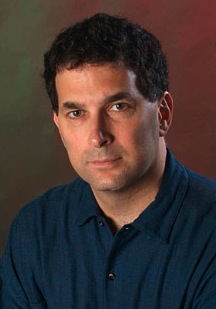 "I gave him The Phantom Freighter; he gave me The Maltese Falcon."
"I gave him The Phantom Freighter; he gave me The Maltese Falcon." Two rip-snorting NPR radio adaptations featuring pulp-master Lester Dent’s 1930s adventure hero Doc Savage, Fear Cay and The Thousand-Headed Man, are now available.
Two rip-snorting NPR radio adaptations featuring pulp-master Lester Dent’s 1930s adventure hero Doc Savage, Fear Cay and The Thousand-Headed Man, are now available.
